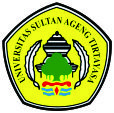Characteristics of surface roughness and microhardness of nitrided pure iron
Abstract
The nitriding process on metal is commonly made to improve hardness, tribological properties, machinery components, and parts durability. This nitriding process shall affect surface roughness. The surface roughness determined the quality of components at the time of its use. The surface hardness changes through the surface chemistry, and to increase the surface roughness are important things to observe the surface modification in nitriding component. The nitriding process of pure iron has been carried out to achieved high surface hardness. The nitriding process was done at the temperature of 1000 °C for 1 hour in the nitrogen atmosphere. This work will discuss the roughness and microhardness characteristic of untreated and treated by nitriding of the pure iron surface to show the correlation of surface roughness to its microhardness. Surface roughness testing is done by mapping the sample area in an array. The surface hardness test is carried out on the Vickers scale. The surface roughness results showed two critical values: surface roughness (Ra) and the mean surface roughness depth (Rz). The surface roughness value of pure iron increased, the lowest value before treated is 0.0465 μm and the highest value after treated is 0.1089 μm. The changes of Rz value before treated is 0.2333 μm and the highest value after treated is 1.160 μm. The surface microhardness after nitriding increased significantly. The average increase that occurred was from 122.8 HV become 533.8 HV.
Full Text:
PDFDOI: http://dx.doi.org/10.36055/fwl.v0i0.10198
Refbacks
- There are currently no refbacks.







